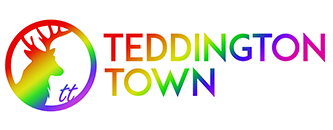Connectors For Information Technology (IT) Equipment: How It Works
In today’s modern world, we want everything to be wireless. However, there are a few occasions where you need wires to maintain the quality of signals. It is also not very easy to breach data when you use wires. Many applications need the stability, security, and signal strength the wires and connectors offer.
To learn more about them, you must understand the various types involved. In this blog, we will list them and briefly describe how each one works.
1. Ethernet Cable Connectors
These look similar to the telephone cables. But, these are a little wide since they house eight conductors, as opposed to the four conductors found in telephone wires. There are different categories like CAT5 and CAT6. As said earlier, the eight conductors carry information from one device to another.
The Ethernet cable has a set of protocols that convert the data layer into signals ready to transmit over a physical medium(conductors). These are essential in connecting Local Area Networks and connecting the device to the internet. Nowadays, Cat-5e has become the standard connector used in various areas.
2. Power Connectors
Unlike the Ethernet cable, a power connector transmits electricity. It connects the device to the power source. Most of these are co-axial cables with the ability to carry either AC or DC. They work just like any other power cables. You connect the terminals to the circuit and the current passes from the source to the device.
Unlike other cables, power connectors only move the signals one way. They use conductors to carry current from one end of the cable to another. However, there are many kinds of pins and even more kinds of modes.
3. Coaxial Cables
You can find these kinds of cables in CCTV cameras and cable TVs. They have a central pin that transmits the signals, while the circular ring secures the cable. You can find these kinds of connectors in your households, too. The primary advantage is that they are easy to fix and repair. Moreover, they provide stable connections and are best for transporting large amounts of data.
4. USB Connectors
These are, in fact, the most widely used and popular forms of cables used in the information technology sector. We use them in our day-to-day life for transferring data, charging our mobile phones, and also to share internet connectivity. You can use these as power connectors as well as network connectors.
They have four wires. Two of them are power conductors and the other two are signal conductors. The twisted network ones are the D+ and D- terminals. They are responsible for data transfer and internet sharing. While the other two are VBUS and GND pins that transmit power from one device to another.
5. Fiber Optic Cables
Fiber optic cables offer you higher speeds of data transfer. For this purpose, many companies use them to provide internet access across their facilities. Most homes also have a fiber-optic connection. They use special kinds of connectors that align with the glass fibers. The precision of the glass fiber arrangement is what makes data transfer more efficient.
Conclusion
Connectors are a vital part of the IT industry. Without them, it becomes rather impossible to continue operations. This concludes our explanation of how different types of connectors work to achieve their functionalities.


